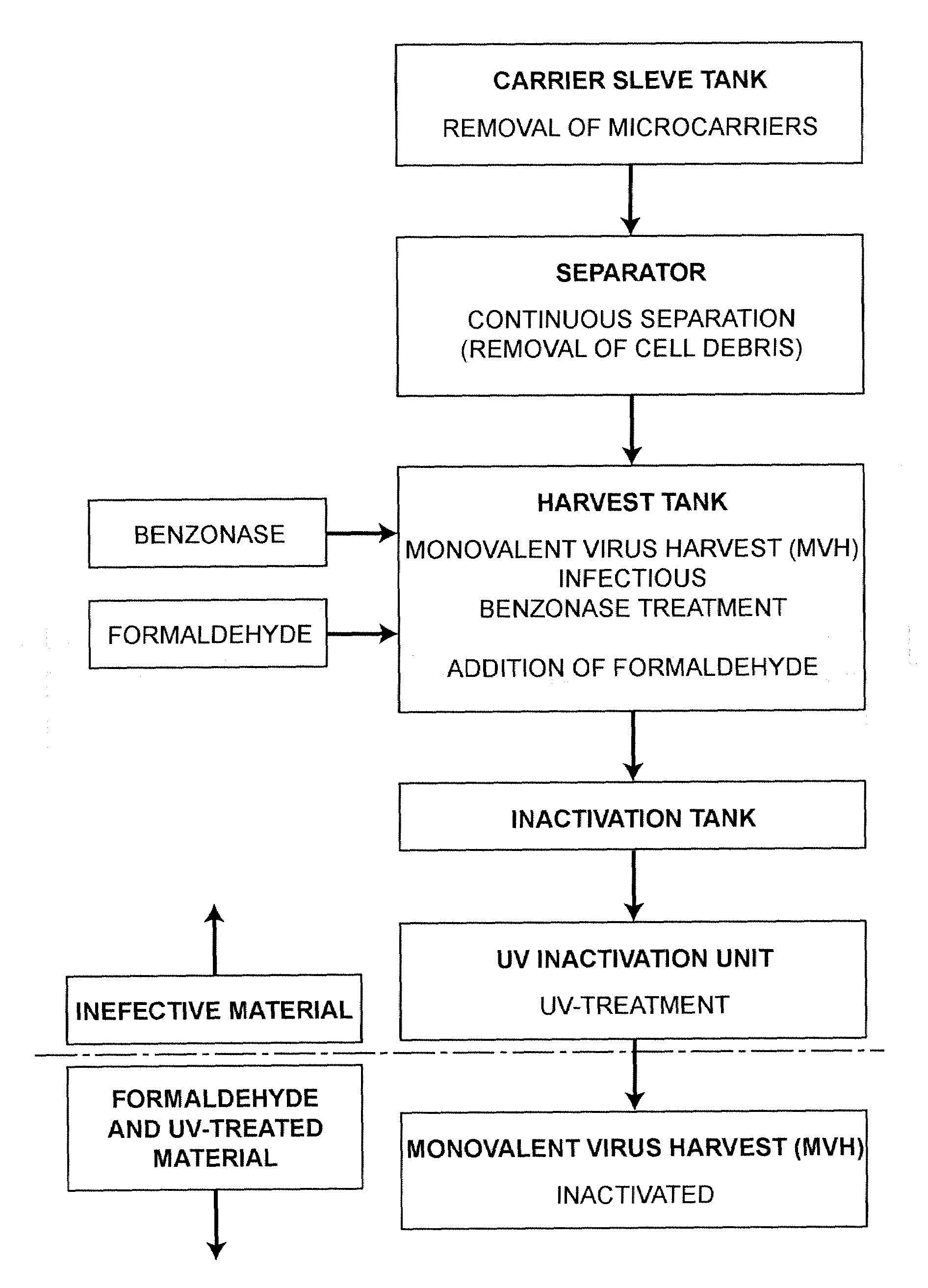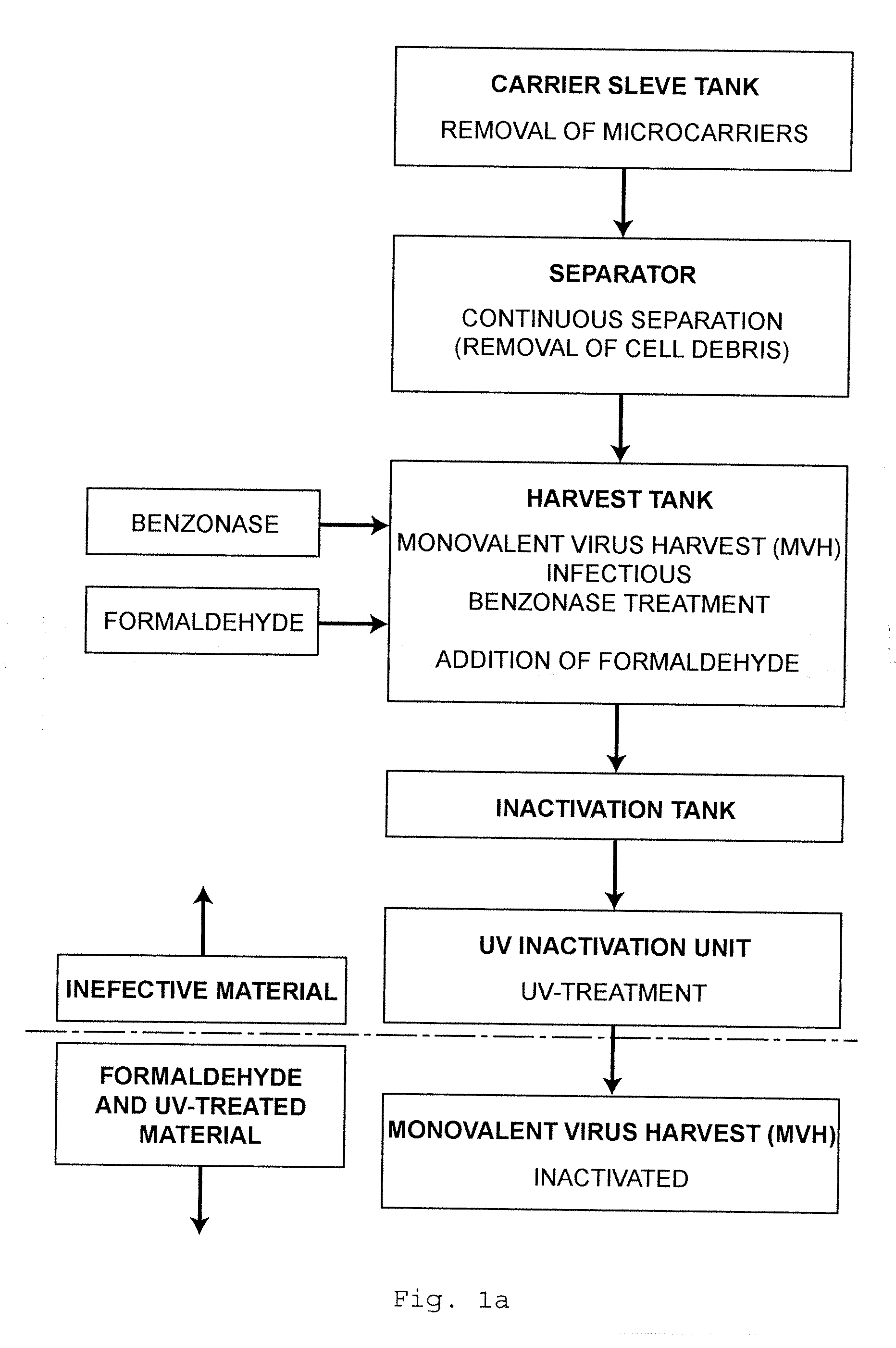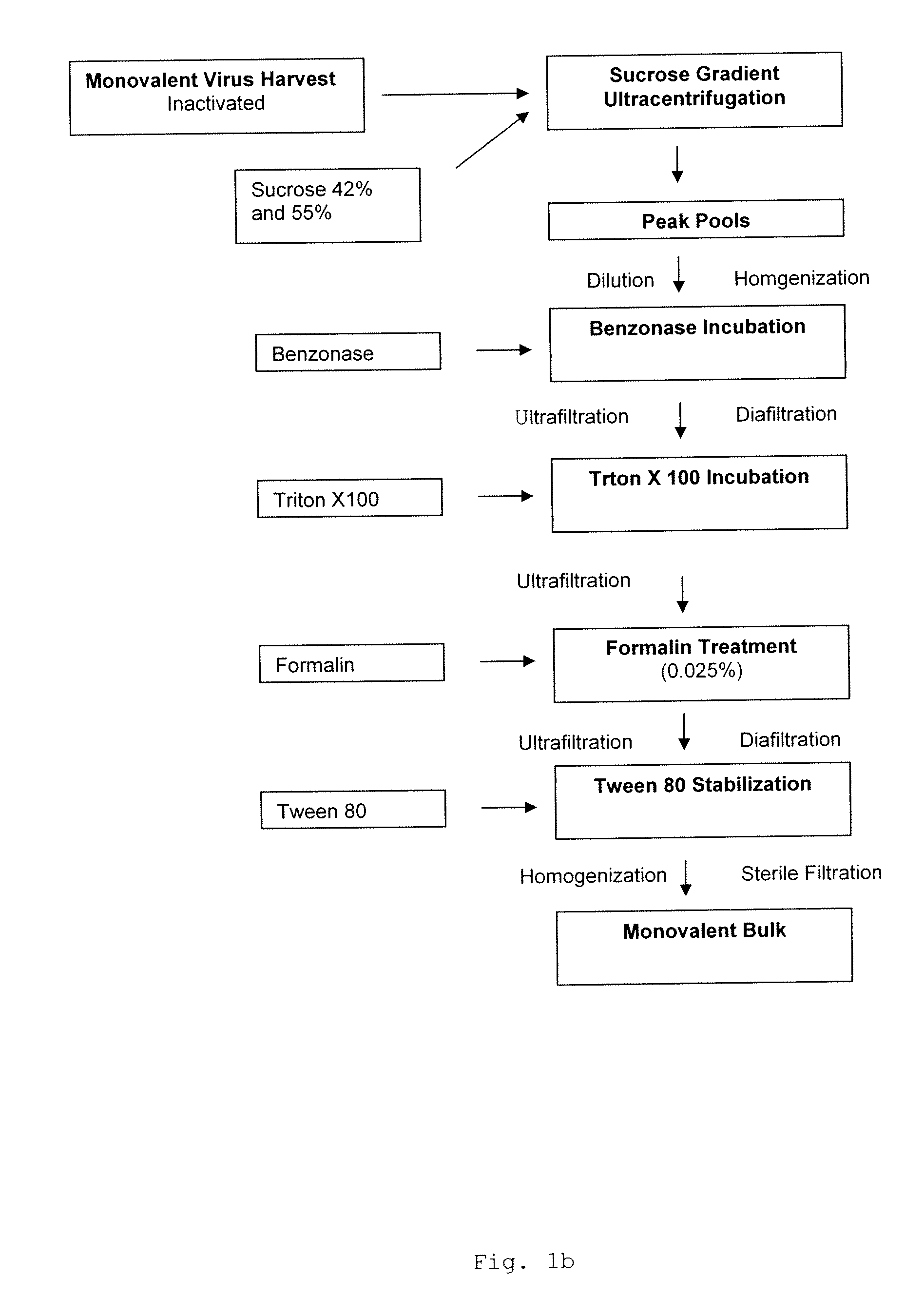Method for Producing Viral Vaccines
a technology for producing viral vaccines and vaccines, applied in the direction of viruses/bacteriophages, antibody medical ingredients, recovery/purification, etc., can solve the problems of affecting the efficacy of purification operations and product quality, and achieve the effect of reducing the number of steps and reducing the reactivity
- Summary
- Abstract
- Description
- Claims
- Application Information
AI Technical Summary
Benefits of technology
Problems solved by technology
Method used
Image
Examples
example 1
Inactivation of Infectious Virus
[0062]Three different influenza strains, two A-strains Hiroshima (HR, H3N2), a New Calcdonia (NC, H1N1) and a B-strain, Malaysia (MA), were produced in Vero cell cultures. After virus propagation the infectious virus harvest is inactivated prior to purification as given in the flow chart of FIG. 1a.
[0063]1.1. Formalin Inactivation
[0064]The first inactivation step with formalin is carried out on a cell-free, infectious monovalent virus harvest, i.e. a bioreactor harvest after clarification via centrifugation. After the collection at 30 to 34° C., the monovalent virus harvest is treated with about 0.9 to about 1.1 U / ml Benzonase at 30 to 34° C. for 4 to 8 hours. Then it is treated with <=92 mg / l formalin for 24 to 24.5 hours at 32+ / −2° C.
[0065]1.2. UV Inactivation
[0066]A number of inactivation experiments with formalin-inactivated viruses are carried out using an inactivation chamber with a 65 W UV lamp and a thin layer chamber. Although full inactivat...
example 2
Purification by Ultracentrifugation
[0071]During purification of influenza virus antigen, the monovalent harvest (MVH) is concentrated by centrifugation. A continuous flow centrifugation procedure can be applied for the manufacture of the Vero cell culture grown viral vaccine based on a sucrose gradient formed using an aqueous sucrose solution. The centrifuge model used was equipped with a preclarifier. Small scale experiments with a density gradient formed using approx. 42% and 55% (w / w) sucrose solution in 20 mM Tris-buffer were carried out under different centrifugation conditions. In addition, ultracentrifugation without preclarifier but with increased g-forces turned out to be a valuable tool for yield improvement.
[0072]Monovalent Influenza virus harvests (MVHs) were used for the comparative studies. The MVHs were purified with continuous ultracentrifugation with a laboratory centrifuge model RK-6 at 35.000 rpm.
example 3
Purification / Processing
[0073]For an influenza candidate vaccine, three different strains of influenza were purified and collected from ultracentrifugation as described in example 2. Antigen yields were different in the Peak Pools. The influenza strain New Calcdonia had the lowest antigen yield followed by Hiroshima and finally Malaysia. Protein content was highest in the Malaysia and lowest in the Hiroshima. SRD (Single Radial Immunodiffusion Assay (HA-quantification)) to Total Protein ratios were comparable in Peak Pools from Malaysia and New Calcdonia, but higher in the Hiroshima (Table 1).
TABLE 1Analytical results of peak poolsHR05 / 61MA04 / 61NC99 / 51Influenza strainHiroshimaMalaysiaNew CaledoniaAmount (ml (g))840.4 (1000)420.2 (500.1)420.2 (500)SRD (μg / ml)246.2426.6194.9Protein conc.4871495764(μg / ml) by BradfordSRD / protein ratio0.510.280.26VERO Protein conc.6.219.718.9(μg / ml) by ELISA
Further processing was according to the following overview:
[0074]3.1. Dilution of Peak Pools
[0075]T...
PUM
| Property | Measurement | Unit |
|---|---|---|
| concentration | aaaaa | aaaaa |
| concentration | aaaaa | aaaaa |
| concentration | aaaaa | aaaaa |
Abstract
Description
Claims
Application Information
 Login to View More
Login to View More - R&D
- Intellectual Property
- Life Sciences
- Materials
- Tech Scout
- Unparalleled Data Quality
- Higher Quality Content
- 60% Fewer Hallucinations
Browse by: Latest US Patents, China's latest patents, Technical Efficacy Thesaurus, Application Domain, Technology Topic, Popular Technical Reports.
© 2025 PatSnap. All rights reserved.Legal|Privacy policy|Modern Slavery Act Transparency Statement|Sitemap|About US| Contact US: help@patsnap.com



